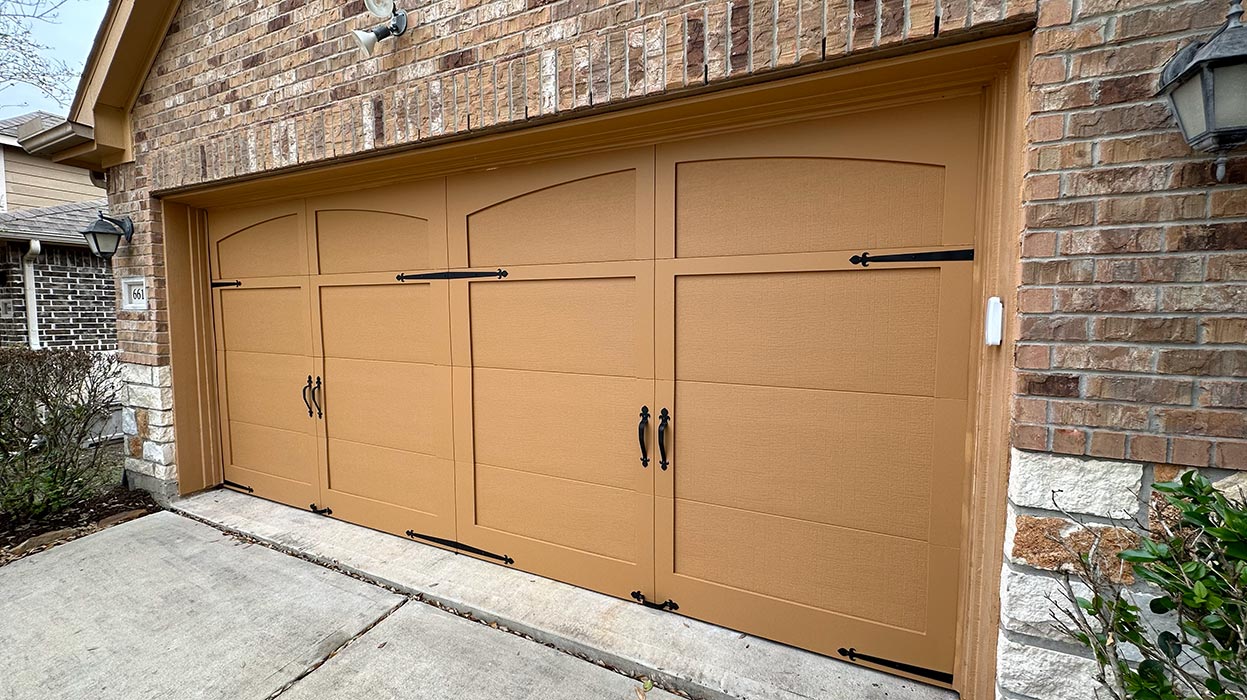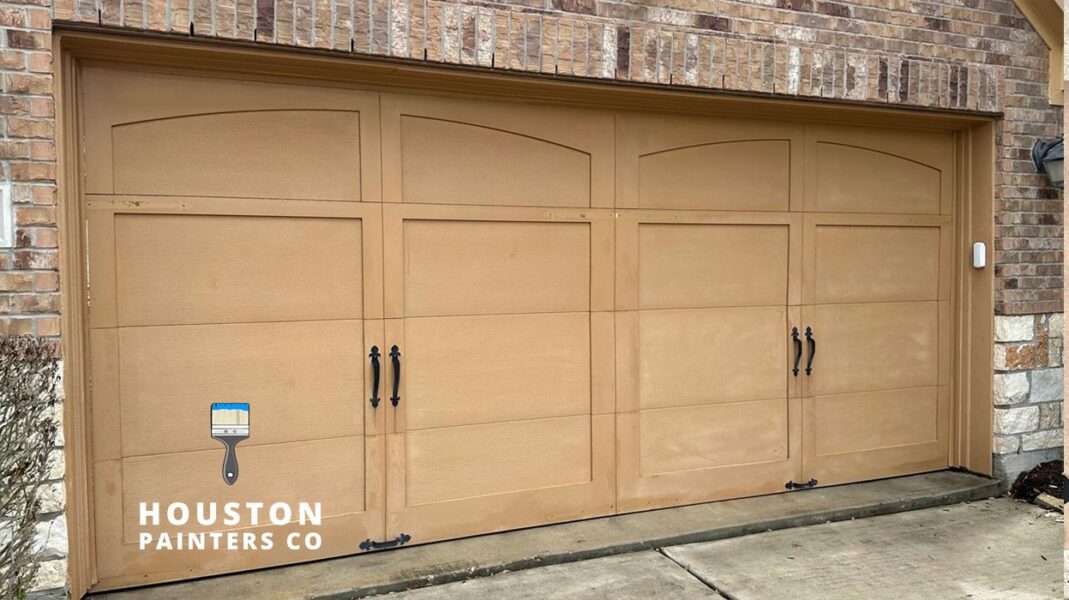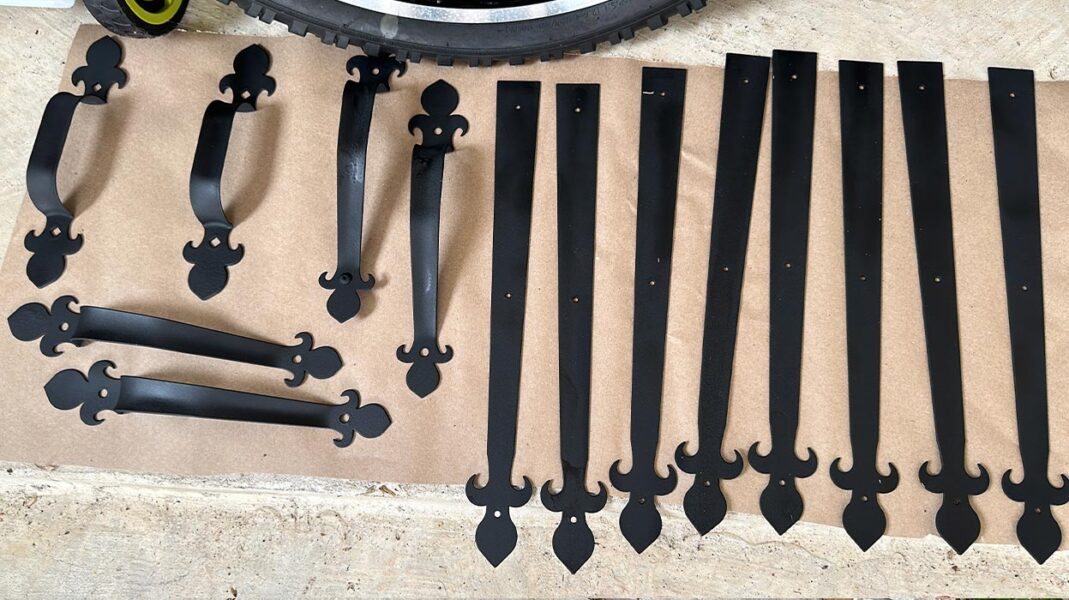
How to Paint Your Garage Door
In this post we will tell you how Houston Painters Co. paints garage doors in Houston. Painting your garage door can be intimidating but once you know how to do it, you will be able to do it yourself during your weekend. However, if you believe it will be impossible for you to do, you can always contact us and we will paint your garage door for you.
You will Need
- Pressure washer
- 220 Grit sand paper
- Airless sprayer
- Brush and roller
- Primer
- Paint – we recommend using Emerald Rain Refresh from Sherwin Williams
- Plastic, paper, and/or tarps
- Blue tape
- Metallic paint for metal hardware
- Screwdriver
Pressure Wash the Door
Before you begin painting, it’s essential to thoroughly clean your garage door. The best approach is to pressure wash it the day before you plan to start painting. Be cautious not to damage the surface—avoid placing the nozzle too close and steer clear of using a 0-degree tip, which can be too harsh. Once it’s been washed, allow the door to dry completely overnight to ensure the best paint adhesion.

Sand, man!
The next crucial step is to sand the garage door thoroughly. Using 220-grit sandpaper, carefully sand the entire surface to ensure a smooth finish and optimal paint adhesion. Make sure to cover all areas evenly, as this will help the new paint bond properly and create a long-lasting, professional look.
Prep Work
Properly prepping your work area is one of the most important steps in painting your garage door. Skipping this simple but time-consuming task could result in paint splatters on your driveway, inside your house, on your car, or worse—on your neighbor’s property.
At Houston Painters Co., we always start by laying down plastic, paper, or tarps to protect the floor adjacent to the garage door, ensuring no paint reaches the concrete.
Next, cover the surrounding area with plastic or paper. If you’re painting the trim, make sure to mask off areas beyond the trim to avoid accidental over-spraying. If you’re not painting the trim, take extra care to cover it completely to prevent any paint from seeping through and spoiling the finished look.
Prime
An often overlooked but essential step is priming the garage door. Priming not only ensures better paint coverage but also helps conceal imperfections like rust spots. For optimal results, have your primer tinted to match the color of your paint—most paint stores can do this upon request. Be sure to choose a high-quality primer designed for exterior surfaces, as your garage door will likely be exposed to direct sunlight for extended periods, and you need a product that can withstand UV rays while providing excellent coverage.
For a professional finish, consider using a paint sprayer. If you don’t have access to one, a brush and roller will still get the job done—just be sure to cover the door thoroughly and evenly.
Paint
Finally, after countless hours of prep and cleaning, you’re ready to paint your garage door. You have two options: spray paint or a brush and roller. Even if you choose to spray paint, you’ll still need a brush or small roller for those tricky areas above the folds where the spray can’t reach. When spray painting, be sure to overlap each pass by 50% to ensure even coverage and avoid streaks.
We recommend Emerald Rain Refresh from Sherwin Williams to paint your garage door.
One thing to keep in mind is that the actual painting process is surprisingly quick—it may feel a bit anticlimactic after all the prep work, taking only about three minutes. However, the advantage is that this speed allows you to focus on achieving an even finish with minimal effort. On the flip side, if you’re not careful, the rush can lead to missed spots or an uneven coat, which might require additional touch-ups.
If needed, you can apply a second coat after three to four hours to ensure the final result is smooth and long-lasting. The downside of this is the extra waiting time, but the benefit is a more durable and polished finish that will last longer and look more professional
Extra Tips
Make sure to cover or remove the plastic guard at the bottom of the garage door, as failing to do so will result in it being painted.
Another important tip is to have someone gently pull the door from the inside to ensure the gaps between the door and trim are fully painted.
When you’ve finished painting the door, open it to allow the paint to dry horizontally. This helps prevent drips and ensures an even finish.
There will also be spots on the sides of the door that the spray won’t reach. To address these, open the door halfway and use a brush or small roller to paint those areas. If you prefer to spray paint them, you’ll need to cover nearby walls, metal components, and anything else that might accidentally get painted. However, it’s much easier and cleaner to use a roller for these spots.
If your garage door has metal hardware or ornaments, it’s a good idea to freshen them up with a can of metallic spray paint. Be sure to spray them away from the garage door, as the paint can travel and potentially get on the door itself. Let them dry overnight before reinstalling them.

